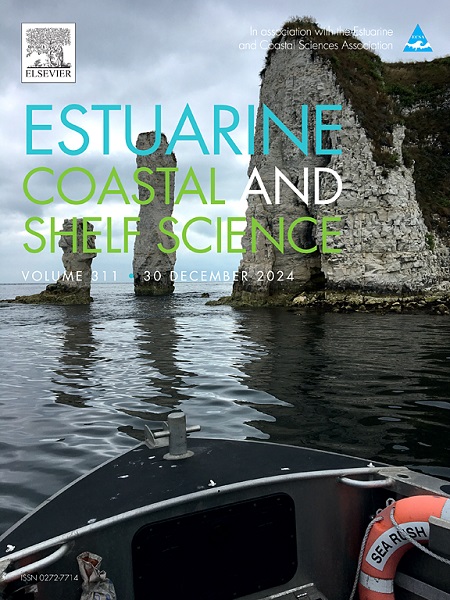Climate effect on the seasonal gonad maturity of three commercial penaeid shrimp species in the Gulf of California
IF 2.6
3区 地球科学
Q1 MARINE & FRESHWATER BIOLOGY
引用次数: 0
Abstract
Penaeid shrimp represents one of the most economically important fisheries worldwide. In Mexico, they comprise a sequential multispecies fishery with highly variable seasonal and interannual production, presenting its maximum national yield in the Gulf of California (GC) by exploiting the species Litopenaues vannamei, L. stylirostris, and Farfantepenaues californiensis. The yield variability can be related to their reproductive climatic adaptability, measured by the Mexican Fisheries Bureau as the intra and inter-seasonal percentage of mature females (%MF). Currently, shrimp fishery management in Mexico does not explicitly consider the environmental effect within the exploitation strategies for each species, although climatic factors significantly affect this fishery. For this reason, the present study aims to determine a function to estimate the monthly %MF for each commercial penaeid species considering climatic fluctuations. For this objective, the monthly relationship of %MF for each species over 15 years (2001–2015) with the seasonal cycle of the sea surface temperature anomalies (1950–2020) were analyzed and classified by intensity scenarios (normal, warm & cold) in the southern GC, fitting a logistic function based on monthly SST differentials and SST time lags per species. As a result, the model was able to explain 40–60% of the %MF variation per species (p < 0.001), defining the natural seasonal peaks in the summer and declining towards the winter. Under the climate scenarios, the weak-cold anomalies resulted in the maximum %MF (up to +142% in F. californiensis). Conversely, a minimum %MF (−50%) for the three species resulted from moderate to strong warming anomalies. The %MF of the species with the most tropical affinity (L. vannamei and F. californiensis) were the least vulnerable under weak-warm anomalies, while the more temperate species was the most sensible (L. stylirostris). The model significantly predicted the seasonality of %MF per species and suggests an inverse relationship with SST anomalies, which may have important implications for resource management under climate change and may support the improvement of stock assessment.
求助全文
约1分钟内获得全文
求助全文
来源期刊
CiteScore
5.60
自引率
7.10%
发文量
374
审稿时长
9 months
期刊介绍:
Estuarine, Coastal and Shelf Science is an international multidisciplinary journal devoted to the analysis of saline water phenomena ranging from the outer edge of the continental shelf to the upper limits of the tidal zone. The journal provides a unique forum, unifying the multidisciplinary approaches to the study of the oceanography of estuaries, coastal zones, and continental shelf seas. It features original research papers, review papers and short communications treating such disciplines as zoology, botany, geology, sedimentology, physical oceanography.

 求助内容:
求助内容: 应助结果提醒方式:
应助结果提醒方式:


